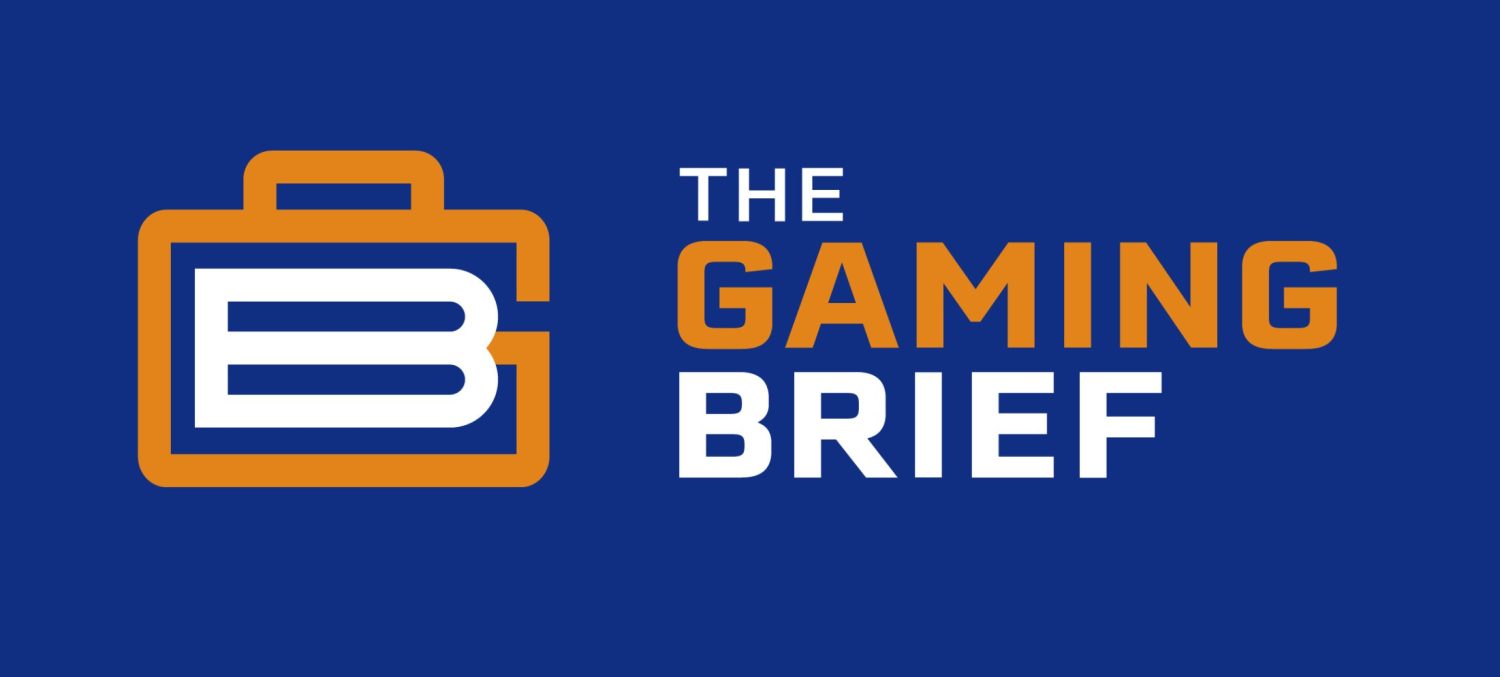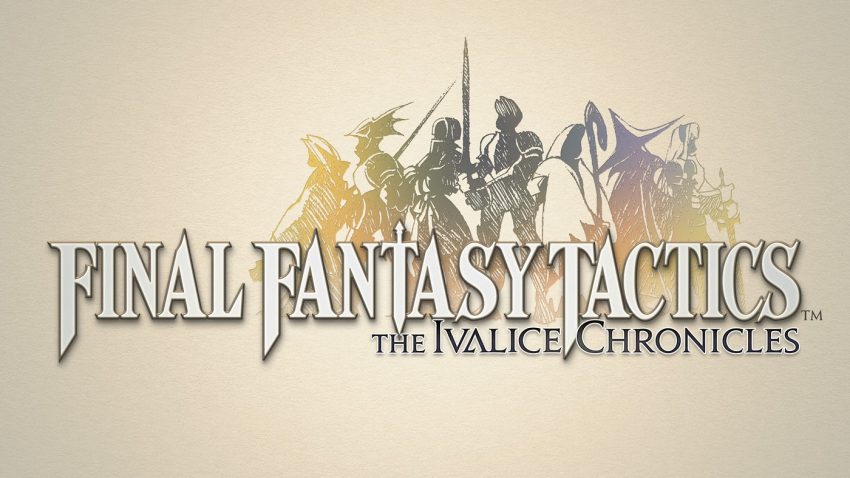This review will be nearly spoiler-free despite the game’s story being largely similar to the original game.
FINAL FANTASY TACTICS – The Ivalice Chronicles is a very solid SRPG with quality of life and presentational improvements over the PS1 and PSP versions of the game. These changes help modernize it for new audiences, but it isn’t without its quirks.
The Story of FINAL FANTASY TACTICS – The Ivalice Chronicles
FINAL FANTASY TACTICS – The Ivalice Chronicles is a remaster of the original game from the PS1, released first in 1997 in Japan.
The story of the game centres on Ramza, who is the third son of House Beoulve. His father was a war hero from the Fifty Years’ War. Their family holds significant importance to the land of Ivalice. They soon, however, become embroiled in the War of the Lions. This war pits two competing factions against one another as they fight over who should be the rightful heir to the throne of Ivalice. Duke Goltanna (the Black Lion) believes that Prince Orinas should become the ruler of the land. Duke Larg (the White Lion) believes that it should be Princess Ovelia. The wild card in this story, apart from the Beoulve family, is the Church – whose motivations and allegiances become clear with every passing hour of game time. This political triangle sets off a nice level of intrigue between warring factions with twists and turns that surprised me, a somewhat seasoned fan of the genre. Outside of these three, there are also mavericks like Delita Hyral. He has a significant impact on the story as a whole.
Of the SRPGs that I have played, this one definitely has the most intricate story. It’s a story that might seem familiar to fans of Game of Thrones. Coincidentally, these stories both launch within a year of each other.
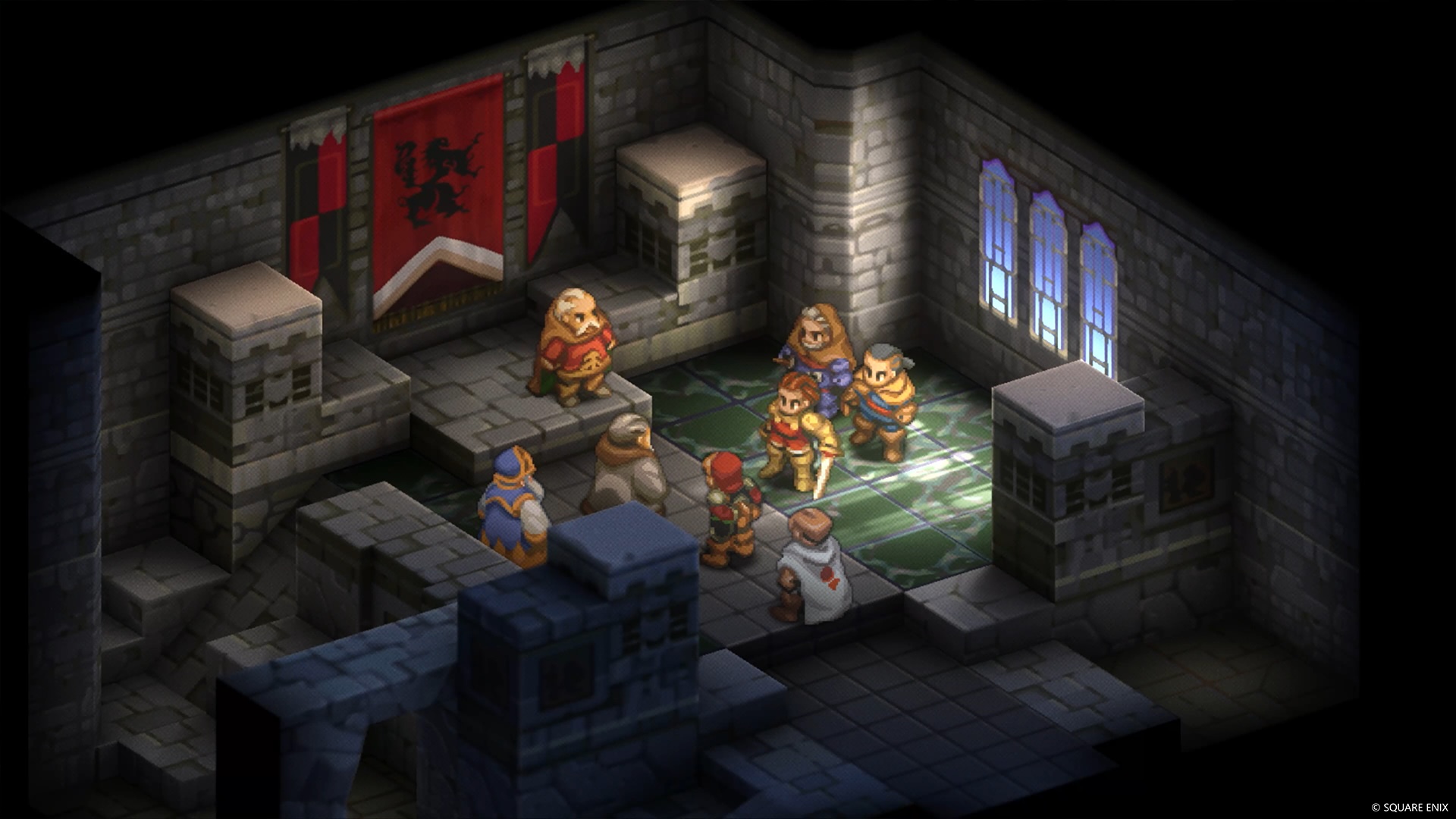
Gameplay
FINAL FANTASY TACTICS is a stalwart in the world of Strategy RPGs (SRPGs).
In the game, you will command 4-5 units to take down a group of enemies. They might outnumber your crew by double that at times. Most of the game will be spent moving your characters around like chess pieces to overwhelm your enemy. At times, you’ll be given another objective, like saving a third party or taking down one specific enemy unit.
The battles are really solid here. Outside of figuring out the best combination of unit types for your enemy’s own set of soldiers, the diverse environments lead to a fun tactical experience. The verticality of the levels was something that I haven’t seen in another tactics game. Instead of just having wildly different terrain types to deal with (there are a few here), your characters could be a full 10 space lengths lower in elevation compared to enemy units. This makes a battle at a creek, where your character might be fully submerged, very different than a battle at a castle.
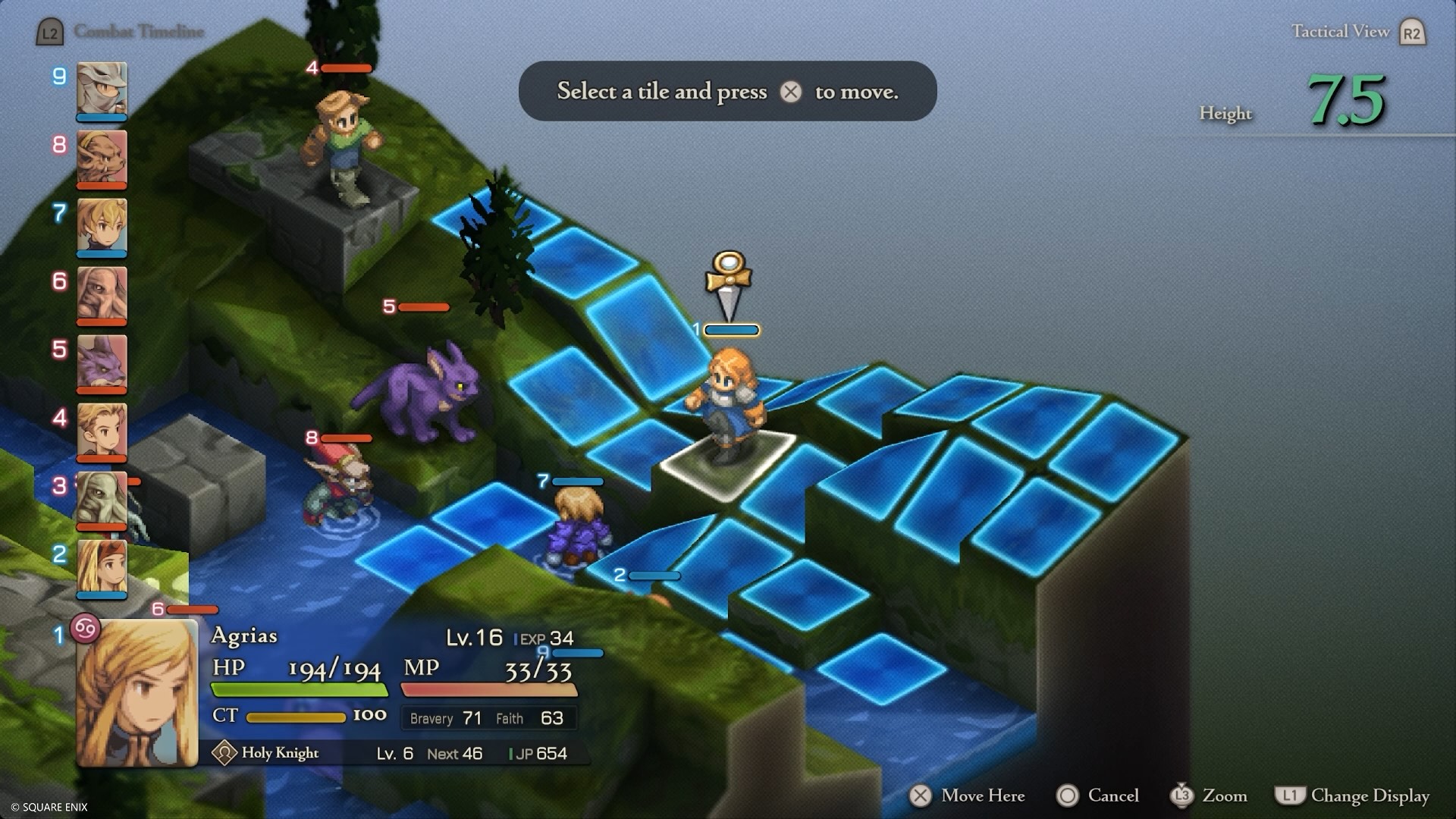
Game Structure
As the game’s story progresses, you’ll be asked to carry out certain objectives across the world of Ivalice. As you travel between different locations, you’ll gather units, weapons, items, and interact with some of the game’s minor systems. This includes discovering the world lore through the game’s Chronicle section, finding out rumours about the world or sending your units out on jobs to gather Gil, experience and more intel about the world. You will start the game with just a few characters to take into battles. Eventually, you will be able to carry up to 50 humans and creatures in your army.
Get a Job
Your human characters can take advantage of the game’s really complex job system to diversify their skillsets. Here you will see some classic archetypes from the world of Final Fantasy. But instead of evolving your character in a linear sense like you might in other games from the genre (think Knight to Great Knight), you can cross-train characters really easily to make the units reflect your preferred playstyle.
The job system is the secret ace in the gameplay here, and although somewhat obtuse at times, I think there’s a lot of depth that you can explore within it. The thing that excited me most about the battles at times wasn’t the battles themselves, but figuring out how to wring the most out of them. That way, I could get more experience to spend on new jobs and skills for my favourite units. Your units can be focused on one job type while pulling skills from at least one other job type, so in the mid/late game, you can really start to experiment with fun combinations of skills and character archetypes. Most of the jobs had fun, diverse skills. I found myself using almost all of them.
Some odd choices were kept from the original game, however. The ability to leverage friendly fire between units for additional experience is an example of that. As a new player to the Final Fantasy Tactics series, the experimentation within the job system was easily my favourite part of the game. Jobs could have used more tutorialization and more streamlined menuing, but it had a lot of depth to explore once you got your head around it.
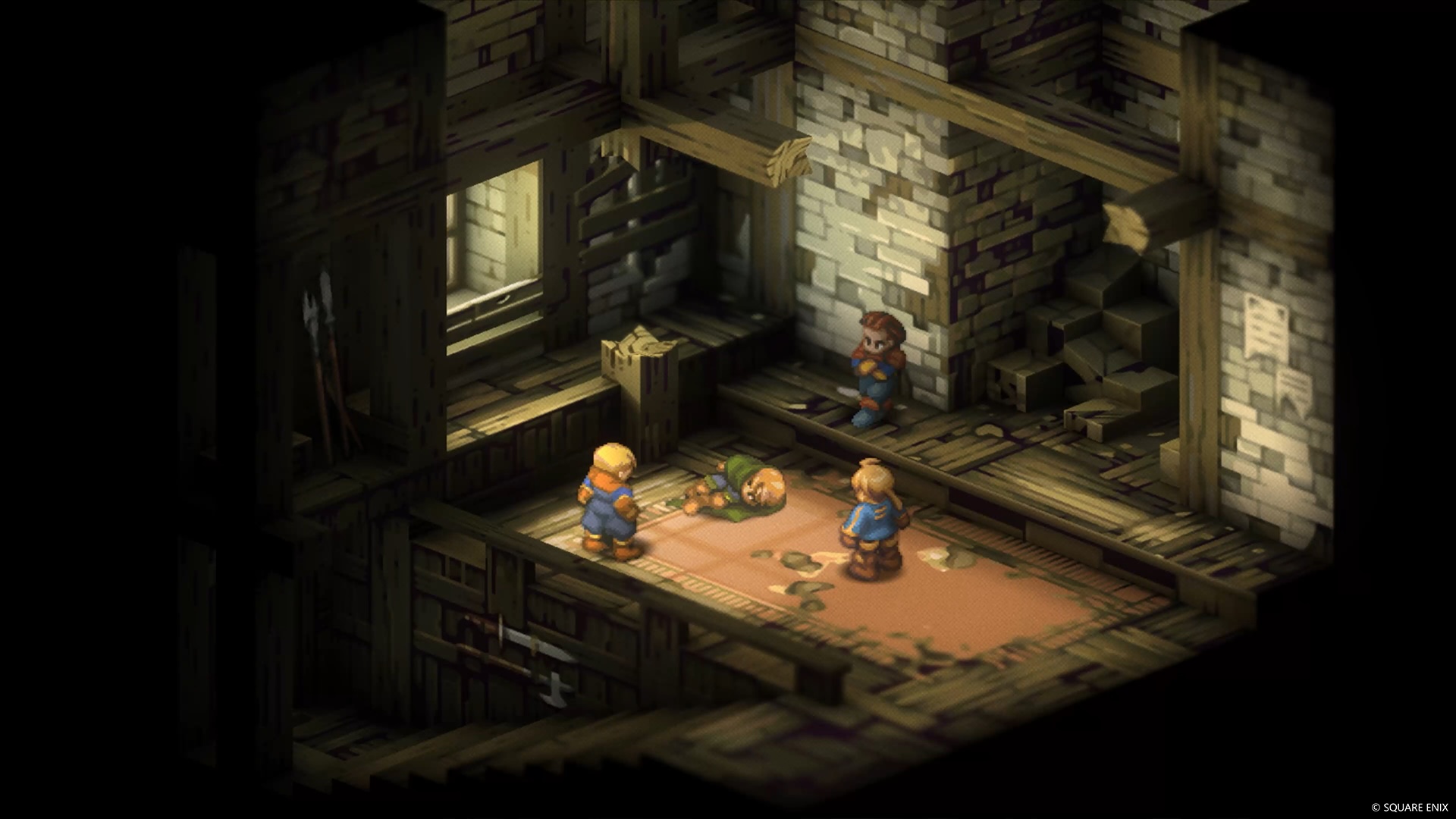
Modifications to the Original Formula
This remaster really focuses its attention on two major areas: presentation and quality of life improvements for the gameplay.
Presentation
First, I really appreciate the higher-fidelity character models and environments. Having seen footage of some of the key battles of the game in both the original and first remaster (War of the Lions on PSP in 2007), I appreciate how faithfully these games recreate the iconic environments from those games. Now, the new art style may not suit you. If that’s the case, you can engage with the original release, which is also a part of this package.
Greater still for the fans of the series, voice acting has been added to the entire game for the very first time. All characters with dialogue have now been voiced in both Japanese and English. The script has a medieval feel to it and only occasionally feels like it strays too far into Middle English. I particularly want to commend two of the performances in this one. Carrying the game as the lead is tough, but Joe Pitts (Lies of P) as Ramza Beoulve delivered a performance that evolved quite nicely as the game went on. The performance struck me as youthful at the start of the game and then seemed to grow as Ramza matured through the game’s thirty-hour runtime. Moreover, Ben Starr as Dycedarg Beoulve was the highlight of the voice cast for me simply because of the intricacies of his performance. There were several times when you could hear the contortions of his body while speaking. Despite not having motion capture, I think that some folks may remember and cherish this role over his performance as Clive Rosfield in Final Fantasy XVI.
Quality of Life Improvements
Beyond the visual improvements and the voice acting, the game features several improvements that should make this game, which has an aging core, more playable in 2025. First off, and absolutely required for me, was the addition of an easier difficulty. This game is notoriously difficult. After trying to play this one for several hours at the normal difficulty, I was defeated. Thankfully, the new Squire difficulty means that I could actually finish this one. I think that the team could have done more to accommodate new players. Either way, this is a welcome addition for the modern player.
Beyond difficulty, there are several additions to the core gameplay: fast forward, auto-save and an overhead camera. In the original versions of the game, you would have to contend with every one of your enemies’ slow turns as they move through the turn order on the left-hand side of the screen – the fast forward allows you to move faster through those moves. It’s much appreciated here, but the execution isn’t perfect. Sometimes, when there’s dialogue between characters in the middle of the battle, you risk skipping the first exchange if you’re not being vigilant about every beat of the opposing turn. The overhead viewpoint was much appreciated as well. I found that the cursor and camera really struggled with tight spaces and spots where there’s a huge delta between elevations. Those spaces would be impossible to navigate without the new overhead camera. Although one would argue that the regular game camera should just be better.
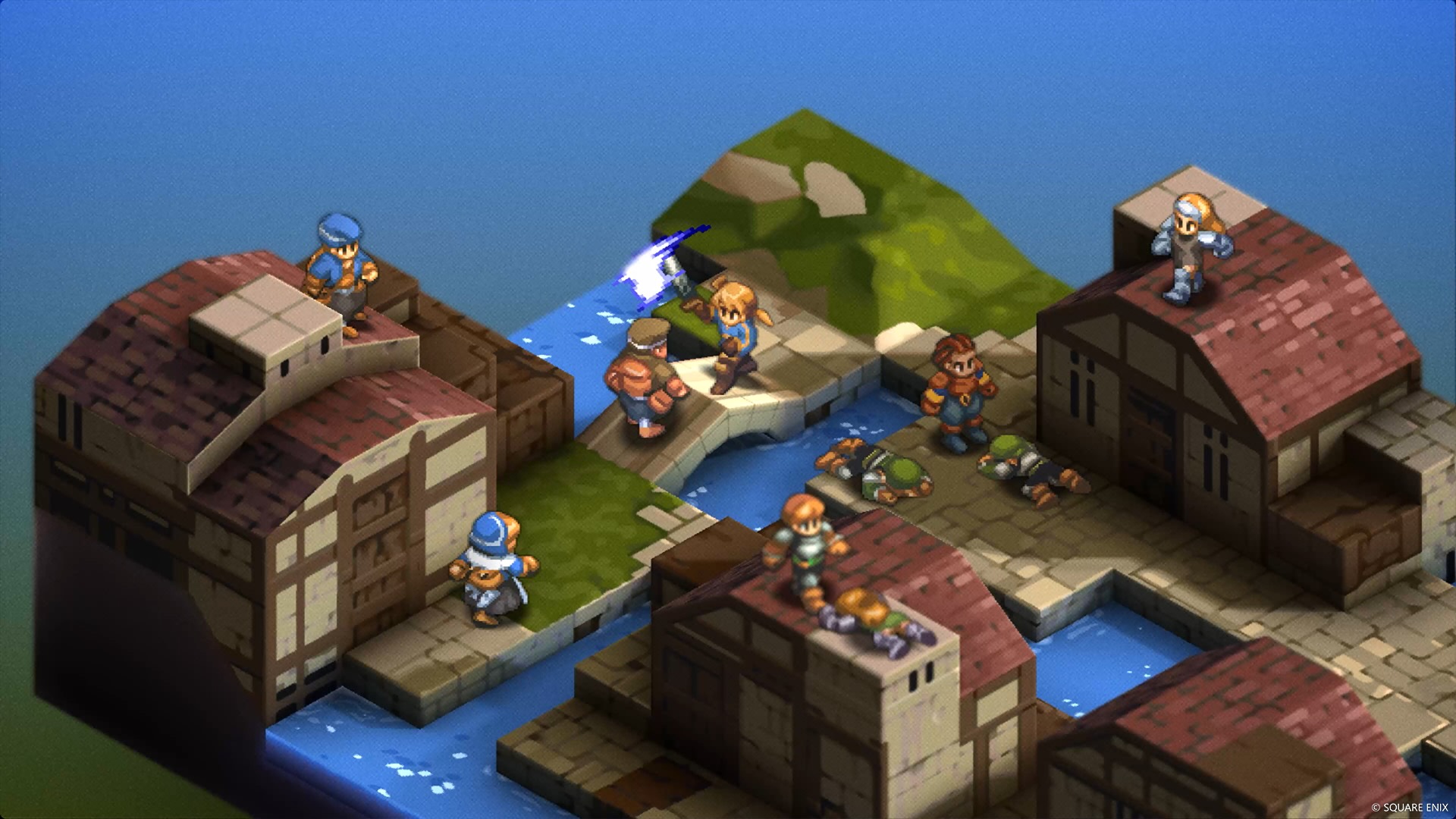
A Classic Tactical Foundation
FINAL FANTASY TACTICS – The Ivalice Chronicles is a really solid strategy RPG. It has good presentation, a great story and an excellent core battle and job system. But it is clearly built on an aging foundation. The game’s camera can be an annoyance. Besides challenges in tight spaces, when your adversary takes control of the board during their turn, you can’t move the camera at will. Despite being a core issue in the original game, this one still had at least two really radical difficulty spikes in the late game. I spent at least six of my thirty hours grinding to improve my character levelling in the back half of the game. Not only that, but you will collect many unimportant generic characters through your playthrough that have no impact on the story and will likely be replaced by characters joining your party late in the game.
All of these quirks don’t detract from a worthwhile tactics experience, modernized somewhat for new audiences.
If you’ve hesitated jumping into the series until now, this is the ideal entry point.
Final Score: 8.5/10
The publisher provided a copy of the game for this feature. Reviewed on PS5.
© SQUARE ENIX
Looking for more tactical combat? Check out our review of Mario + Rabbids: Sparks of Hope!

Jacob is a creator marketing professional, and a fan of video games. He hosts/produces the Left Behind Game Club and is a co-host of Crossplay Conversations. At conventions and bars, he also hosts Video Game Trivia.
